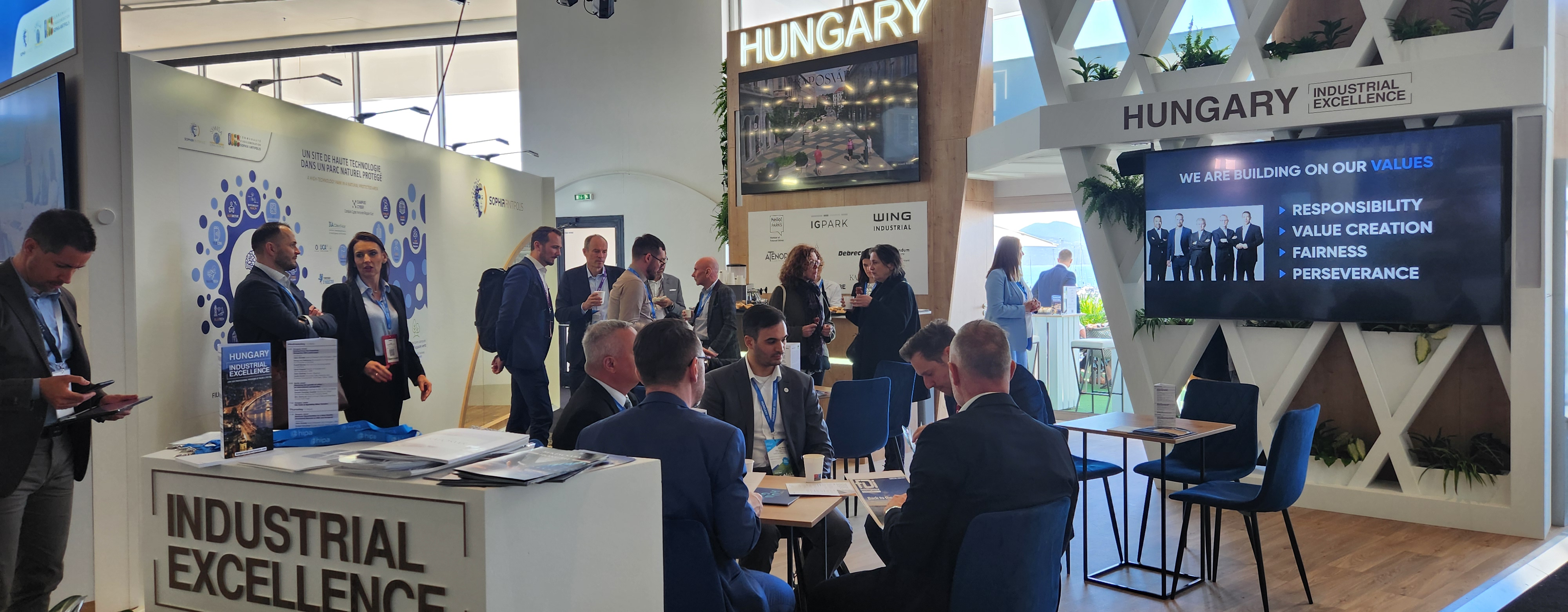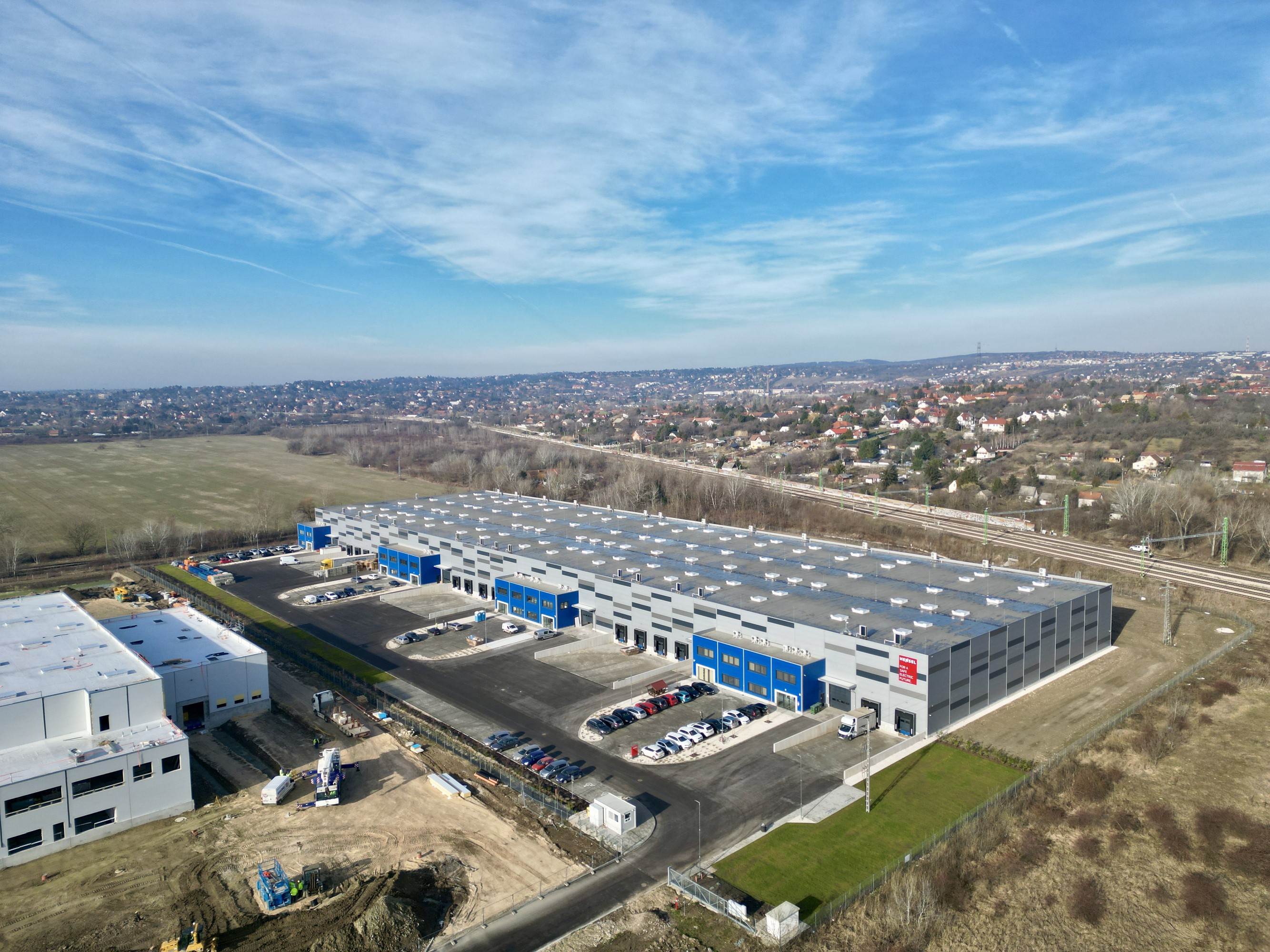Industrial Demand Remains High in Hungary

CTPark Budapest West is located next to Biatorbágy on the M1 highway, in the vicinity of the M0 ring road and only 15 kms from Budapest city center.
The industrial pipeline is strong, and demand remains high, although vacancy rates are rising in an uncertain economic environment. Logistics and industrial dominate in the Greater Budapest area, while it is mainly light industrial production and assembly space in demand in secondary hubs across Hungary.
The market sector is attracting both specialist regional industrial developers and park operators in addition to established players moving across from other sectors into what is considered an attractive development area.
Total industrial stock in Hungary has reached 4.87 million sqm, of which 3.06 million sqm is in the Greater Budapest area and 1.5 million sqm outside the capital, according to the Budapest Research Forum, consisting of CBRE, Colliers, Cushman & Wakefield, Eston International, iQ and Robertson Hungary.
Although going through a development boom, the Hungarian industrial market is small compared to its Central and Eastern European neighbors. Colliers puts total CEE industrial and logistics stock at 65 million sqm in its report “Exceeding Borders: Manufacturing & Warehousing Sector in CEE-12.”
Poland is by far the dominant market at around 30 million sqm or 38% of the entire stock across the CEE-12. This compares to 11.3 million sqm in the Czech Republic, according to the Czech Industrial Research Forum.
Vacancy stands at around 8% in Greater Budapest and 7% in other hubs and is expected to rise. The average vacancy for the CEE region stands at 4%. The area around the capital continues to dominate the logistics market as developers and park operators establish complexes at locations with direct access to the M0 orbital motorway, providing a direct connection tothe city, Ferenc Liszt International Airport, major Hungarian regional hubs and international road links.
Regional centers are seen as a magnet for industries related to global auto manufacturers, with significant investment flowing into electric vehicle production and battery manufacturing facilities.
Industrial Pipeline
CBRE puts the pipeline of modern industrial space for Hungary at 466,000 sqm, with another 135,000 sqm under active construction at the end of H1 2023. The pre-let ratio stood at 48% in Budapest and 45% in secondary hubs.
Cushman & Wakefield has traced 343,000 sqm of industrial space under construction and due to be delivered this year and another 157,000 sqm for 2024. Around half of the pipeline is pre-let.
The regional industrial developer and park operator CTP has recently undertaken the development of 120,000 sqm of space at CTPark Szigetszentmiklós on a 63-hectare (155-acre) site on the southern outskirts of Budapest near the M0.
CTP currently has more than 200,000 sqm of space under construction in Hungary, according to the company. The strategy is to develop in capitals and leading regional logistics and industrial hubs. Prologis, on the other hand, is committed to developing in Greater Budapest.
“We know that a suitable location is key for our customers to optimize their supply chain, so we choose our development sites with this in mind, mostly in the greater Budapest area. The focus is currently on BTS [built-to-suit] developments at Prologis, and it seems other market participants follow the same strategy,” the company says.
“This tendency is expected to continue in the coming years as the general market indicators also show an increase in vacancies and a decrease in market absorption capacity in all countries where we are present in Europe.”
The state-owned National Industrial Park Operator and Developer (Nipüf) has a land bank that covers significant provincial cities across Hungary. The company aims to deliver logistics centers, manufacturing halls and warehouses in areas not otherwise provided for by the market.
Development is generally undertaken on a BTS basis with long-term leases of at least five-plus years for spaces of at least 10,000-15,000 sqm. Nipüf currently has a landbank across 18 locations throughout Hungary. Although state-owned, its activities are conducted on a market basis, according to the company.
Also from a countryside perspective, the Hungarian developer and investor Infogroup has an industrial portfolio of 100,000 sqm, mainly in eastern and central Hungary. The company has started the development of a new 12,000 sqm logistics building for Jabil in Tiszaújváros (175 km northeast of Budapest).
“Our focus has been and still is on regional cities in Hungary,” says Balázs Csifra, director of sales, asset and business management at Infogroup.
‘Big Box’ Builder
Panattoni, one of the leading European industrial developers, has entered Hungary with the development of two “big box” speculative projects in Greater Budapest. One has a development potential of 74,000 sqm in Herceghalom (29 km west of Budapest by road); the other is a 65,000 sqm project in Gyál, on the southeastern outskirts of the capital.
“We still see strong demand for both big box warehouses as well as for ‘last mile’ space. We are also pitching on BTS projects connected to the car and battery production/manufacturing industries,” comments László Kemenes, managing director of Panattoni Hungary.
“We have a good balance between logistics and light industrial at about 50-50. In terms of the location, most of the logistics requirements are for the Budapest area, notably the western part, while production is focused around eastern Hungary,” he says.
Kemenes adds that Panattoni is looking to add energy-efficient solutions to its products, such as solar panels, electric vehicle charging facilities and heat pump systems. He sees that these will soon become standard.
The company has Breeam “Excellent” New Construction accreditation as a standard for its products in Hungary. New requirements from tenants are related to ESG aspects, with many requiring energy-efficient solutions.
CTP is also committed to developing Breeam-accredited buildings throughout its Central European logistics portfolio. Prologis aims its parks to at least Breeam “Very Good” standards.
HelloParks, currently the most active developer in Hungary, has delivered the 46,000 sqm MG3 in Maglód (on the eastern outskirts of Budapest), the first Breeam “Outstanding” accredited logistics building in Hungary, according to the company.
The LogiCube logistics park, under development by the Hungarian company Defacturing, offers Breeam “Excellent” warehouse and office space, primarily for SMEs. A second 2,800 sqm phase of its project in Greater Budapest is due to be completed next year. It includes heat pump heating and cooling systems, solar panels and a green façade.
“We are seeing that demand for well-designed, newly-built, energy-efficient facilities continues to grow, and while this will increase our construction costs, it is still worthwhile in the longer term for both developers and businesses,” said Olivér Nagy, CEO of Defacturing.
This article was first published in the Budapest Business Journal print issue of October 20, 2023.
SUPPORT THE BUDAPEST BUSINESS JOURNAL
Producing journalism that is worthy of the name is a costly business. For 27 years, the publishers, editors and reporters of the Budapest Business Journal have striven to bring you business news that works, information that you can trust, that is factual, accurate and presented without fear or favor.
Newspaper organizations across the globe have struggled to find a business model that allows them to continue to excel, without compromising their ability to perform. Most recently, some have experimented with the idea of involving their most important stakeholders, their readers.
We would like to offer that same opportunity to our readers. We would like to invite you to help us deliver the quality business journalism you require. Hit our Support the BBJ button and you can choose the how much and how often you send us your contributions.










